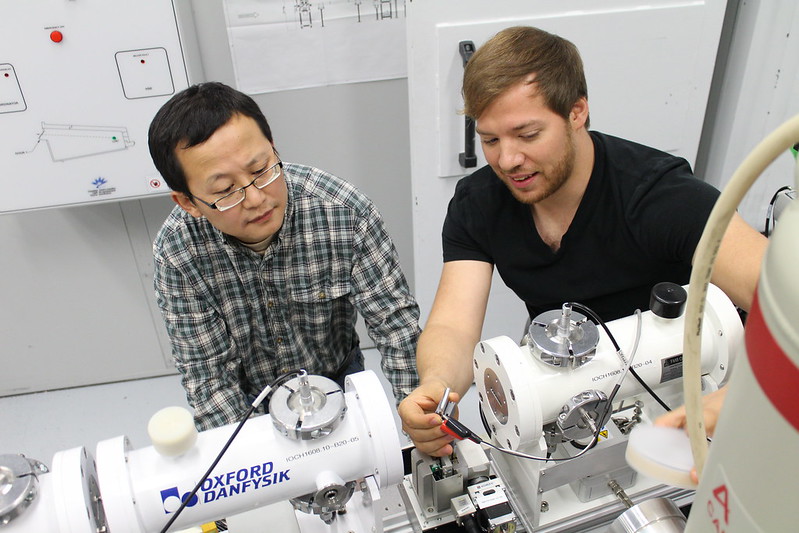
Researchers transform chicken manure into fertilizer
By Canadian Poultry magazine
News ResearchInternational collaboration uses technology from the University of Saskatchewan.
 Industrial staff scientists at the CLS operate the IDEAS beamline.
Industrial staff scientists at the CLS operate the IDEAS beamline. An international collaboration between researchers from Brazil and the U.S. that uses Canadian technology has identified a process for turning poultry waste into a soil additive for agriculture.
“Several countries have large poultry production, especially United States and Brazil, where agriculture is also concentrated,” says Aline Leite, a Post Doctoral researcher from the Federal University of Lavras in Brazil. “So, reusing a global residue generated in large amounts is an interesting way of promoting a circular economy.”
The researchers harvested poultry manure from an experimental site in the U.S., which they heated to turn into biochar, a carbon-rich substance that is used as a soil additive to replenish critical nutrients like phosphorus.
“We are focused on understanding mechanisms that are responsible for increasing phosphorus availability in materials like manure,” Leite says.
Poultry manure is full of calcium and requires higher temperature treatments to turn the waste into biochar, however, these higher temperatures can have an effect on the amount of phosphorus available.
In order to ensure that the biochar contained sufficient available phosphorus, the researchers enriched it with another mineral, magnesium, which protected the phosphorus from the heat and enabled it to form more soluble forms of phosphorus.
Using the IDEAS and VLS-PGM beamlines at the Canadian Light Source (CLS) at the University of Saskatchewan (USask), the researchers were able to visualize the connection between phosphorus and magnesium and confirm the success of their technique.
Their findings were recently published in the scientific journal, Chemosphere.
While phosphorus reserves are found across the globe, the nutrient is a finite resource. Finding ways to recycle the mineral is an important issue for scientists.
“There’s no excuse for not using the phosphorus that is already in the food chain, for example, by reusing the waste that is already generated,” Leite says.
Leite says that synchrotron technology is essential for research into agricultural applications.
“This technology is extremely important for agriculture because it helps determine the concentration and forms of elements that are essential for plant growth,” Leite says. “By accessing the distribution of elements and understanding potential impacts, it gives us a great perspective for sustainable agriculture. The effective use of this technology in the study was only possible due to an international collaboration with researchers of different backgrounds.”
Leite’s study was developed at Cornell University, and carried out under the supervision of professors Johannes Lehmann (Cornell University) and Leônidas Melo (Federal University of Lavras, Brazil).
Print this page